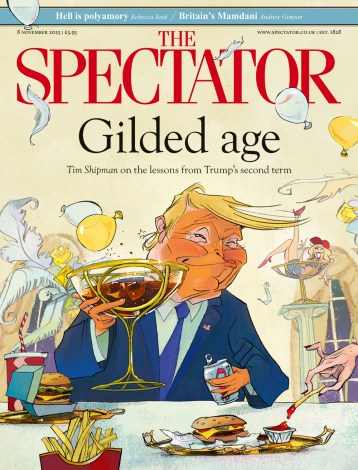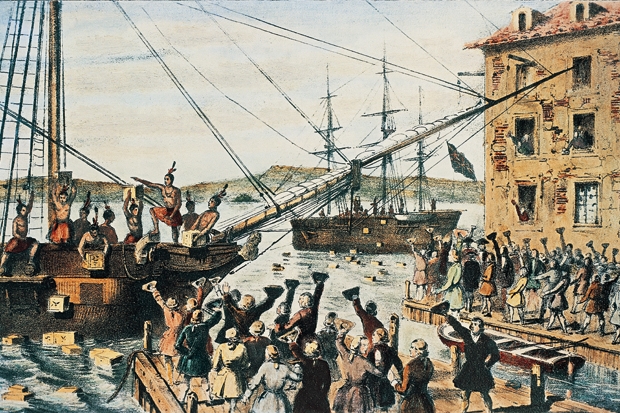In a grand history of the British empire — because that is what this book really is — you might expect more hand-wringing from a historian and Labour MP who has previously written a life of Engels. But despite quoting Marx half a dozen times (and Lenin, twice!) there is something about the idea of empire that excites Tristram Hunt.
And this is a book about ideas, for all that it is rich in architectural description, economic fact and colourful anecdote. It describes how — and indeed when and where — the imperial ideology shaped and reshaped itself. As such, it is a nuanced riposte to those historians of empire, notably Niall Ferguson and his opponents, who prefer to treat the empire as a monolith, all the better for standing grandiosely astride it, or indeed setting dynamite under. Hunt is more like a questing Hercules, clutching at Nereus as the sea-god morphs beneath him.
He doesn’t end in the Hesperides, however, but in a disconsolate Liverpool. On the way, he traces the rise and fall of the empire through spot-samplings of the founding and flourishing of ten imperial cities. Each way-marks a narrative arc that runs from west to east and from ascent to decline; each is chosen to represent imperial ideology at a crucial, often transitional moment in its evolution.
Hunt opens in the Boston of the 1773 tea-party, offered as the quintessential First Empire city, founded on ‘the dual ambition of profit and Protestantism’. In a striking image of ‘a set-piece battle between God and Mammon’ played out on the skyline, Hunt contrasts the 16 spires of the city’s churches (running from the original Brownist church of the Mayflower pilgrims through Scots-Irish Calvinism to Quaker and Anabaptist) with the ‘forest of masts’ attending the 166 wharves on the waterfront. Reading a city’s character through its architecture is about as well-founded as phrenology, but Hunt is never obvious.
And when he shifts south to the slave economy of Bridgetown, Barbados, he resists making crude comparisons with a ‘freedom-loving’ Boston. He does redescribe the cruelty of slave plantations — reminding us, for instance, that the Church of England branded its slaves on the Codrington estate with the word ‘SOCIETY’ on their chests, short (mercifully) for the Society for the Propagation of the Gospel in Foreign Parts. And he does reassert the terrifying value of the ‘triangular trade’ to the English economy. But he expends more historical energy describing a particularly telling ‘tussle over molasses and money’, in which Parliament favoured loyal Bajan planters while punishing the restive merchants of America’s Thirteen Colonies with taxes. Boston responded with a boycott, hoping to bring the Barbadians ‘to a state of despondency without anything but stinking fish and false doctrine’. (Throughout, Hunt has a taste for a ripe quotation.)
He also tells the story of how, in the 1780s, the drunken Duke of Clarence, later William IV, smashed up the brothel belonging to the wealthy free-black madam Rachel Pringle. In the morning, she presented him with a £700 bill — and later renamed her rebuilt establishment the ‘Royal Naval Hotel’. For Hunt, this is more than a scurrilous anecdote; it is evidence of ‘a more complicated inter-racial relationship … which could only take place in Bridgetown’. And this represents ‘a more diffuse process of exchange, interaction and adaptation’ than is captured in the usual, oppositional narratives of empire.
In the core chapters — Dublin, Cape Town, Calcutta, Hong Kong, Bombay — Hunt’s prism of urban history works best. Perhaps because he does not have to span so much historical ground, he focuses better on the city fabric. In Georgian Dublin, offered as a moment of transition between the Atlantic First Empire and the eastern Second Empire, he shifts from a contemporary’s description of filthy, rag-clad wretches bedding down in straw-strewn hovels to another of seven-dish courses and breakfasts of as many turkey eggs. In Cape Town, he reveals a port city founded on a vision of ‘trade and territory, the Royal Navy and mercantilism’ — and, as a consequence, stuffed up with horsehair, imported chintz and mahogany. In a lovely segue, he follows Richard Wellesley from the Cape, in 1798, to Calcutta, where he adopted an ‘Augustan swagger’ as governor-general, affirming ‘an empire of conquest as well as commerce’. In Hong Kong, the British ‘arrived with a free-trade agreement and a cruiser at anchor’. As the Friend of China newspaper put it, ‘the Tartar of Central Asia will trim his beard with Sheffield scissors, and every spinster in Peking must have a Coventry ribbon’.
In the east, Hunt is at his angriest. The Bengal Famine of 1770, in which some 1.2 million Bengalis starved to death, was ‘needlessly exacerbated by the depravity of East India Company agents’ whose nabobs ‘were swanning around Mayfair, buying up country seats and rotten boroughs, impregnating British society with their ill-gotten gains’. You remember at this point that Hunt is a Labour MP — though of course it was Edmund Burke who led the charge against the nabobs.
Chapters on Melbourne and New Delhi expose another sore — the racial ideology that underpinned the later empire. Hunt captures the fear of degeneration, and the hope that the distant colonies would transfuse manly Anglo-Saxon blood back to the mother. In the ‘riding, dancing, cocktail-mixing durbar grandeur’ of New Delhi, he draws the shape of colonial apartheid in the very footprint of Lutyens’s imperial capital, but it doesn’t stop him admiring its architectural glories. He sees similar patterns in Liverpool, where ‘slavery, sugar and all the byways of colonial commerce were drilled through the stones’, yet where the city managed to shed its past for a new identity as ‘a cosmopolitan commercial emporium; a peaceful, free-trading gateway’.
This, then, is why Hunt is so surprisingly comfortable with Britain’s imperial heritage. The empire may have bathed its feet in blood, and lost its head in paternalistic pomp, but at its heart is an idea that a Labour MP can still love today: the empire is recast here as a kind of constellation of urban entrepots, each a nexus of cultural and economic exchange. There were victims and exploiters, of course, but the colonised could also be, like the Duke of Clarence’s brothel-madam, ‘active partners in the development of the colony’s social ecology’.
Fear not: Hunt only rarely slips into such ungainly, left-footed academese. This is a well-written, cleverly constructed and balanced book. It is also beautifully published.






Comments